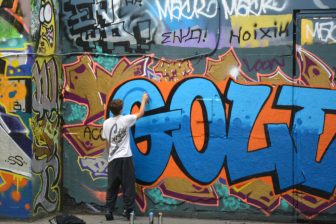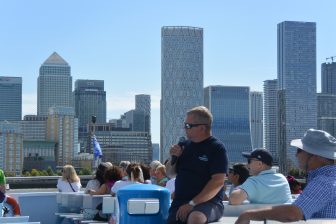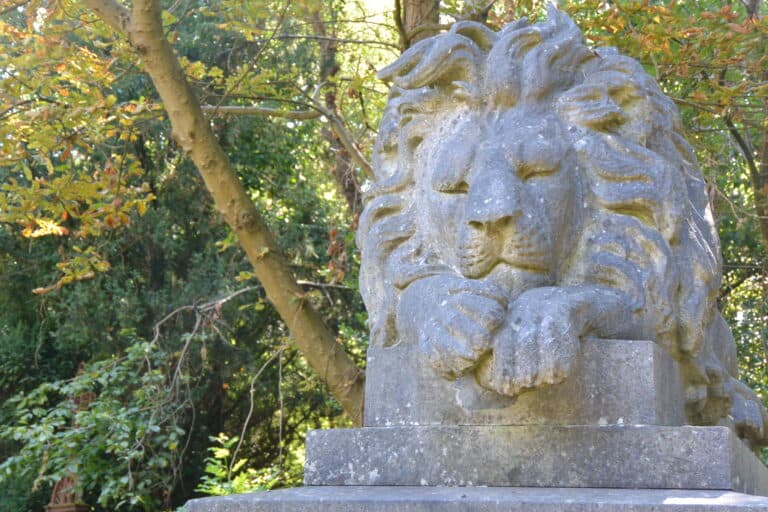
[Aug. 2022] If the British Museum and Tower Bridge are the leading players in London tourism, this Highgate Cemetery could be in the position of a supporting role.
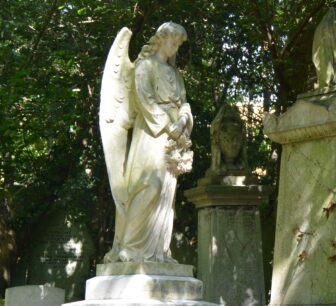
I’ve always wanted to go there, but I’ve never been before.
Highgate Cemetery has two halves, west and east, and you need to take a tour (£15) to enter the older west cemetery.
So, while we live in London, we made a reservation for a tour and even a restaurant as if this was a short trip.
Moreover, the tour started at 10:30 am, so we had to get up early even though it was Sunday.
Our guide, Alice, didn’t say anything that made people laugh, but she wasn’t too serious and boring, and she spoke clearly, so that we could understand her well.
There were 7 participants in the tour including us.
Let’s start with history.

In the 1830s, the City of London’s graveyards were full and grave robberies were rampant.
Apparently, the skulls were rolling like balls.
So they decided to build seven cemeteries outside the city and Highgate Cemetery was one of them built in 1839.
The first person buried here that year was a woman named Elizabeth Jackson, who died at the age of 39.
You would immediately think she must have died prematurely, but according to Alice, the average age of those buried here was 33 at the time.
All the graves are numbered, and this person is number one.
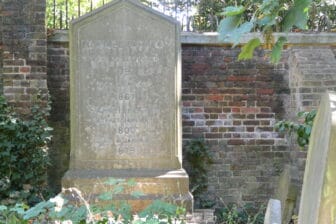
I forgot to ask what was the highest number, but since the graves are still in operation, the number is steadily increasing.
She told us that the price of the site facing the main street in the cemetery is high.
We also learned that parts of the site have been consecrated by the Church of England and other parts have not, so non-members of the Church of England can also be buried.
For example, the tomb of Faraday, the scientist who discovered the law of electromagnetic induction, was located in the part that have not been consecrated by choice.
The tour picked up the graves of great people like Faraday and people who left their names in a small way, and proceeded while explaining the backgrounds and episodes of those people.
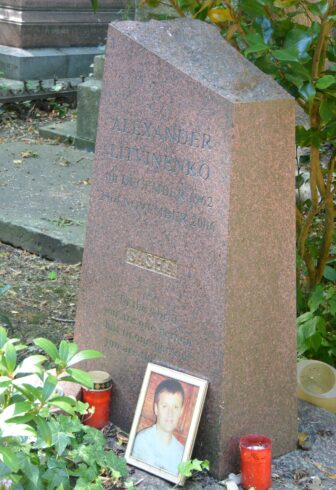
The one which I knew him alive on TV was the grave of Alexander Litvinenko.
He was a former Russian spy who was killed in 2006 by a deadly poison called Polonium-210.
Alice explained that he is buried deeper than the others so that the deadly poison would not leak out.
I heard that the grave of singer George Michael is also here, but I was a little disappointed because she didn’t take us there.
One of the most interesting episodes was the story of the owner of a particularly large coffin in an indoor cemetery called Terrace Catacombs.
In the days before anaesthesia, this big man performed surgeries quickly and skilfully.
It was said that in those days, one in four operated people died in average, but he managed the ratio down to on in six.
However, one time he performed the operation too quickly and cut his assistant’s finger.
The visitor who received the splashed blood died of shock, and the assistant also died due to worsening wounds.
Unfortunately, the patient who was the target of the surgery also died.
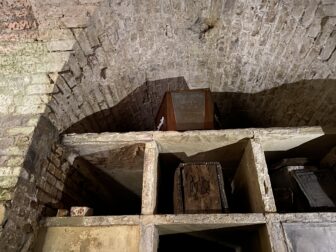
In addition, there were many stories that caught my interest, such as that the tombstone of the impresario of the famous travelling zoo is a gentle lion named Nero, the famous boxer whose chief mourner was his dog instead of his wife and his tombstone is the dog, and a lesbian writer whose grave never run our flowers, and so on.
I felt the 70 minute tour passed quickly.
Oh another thing Alice told us was that cremation was legalised in the late 19th century.
It was not prohibited until then, but at this time it was made clear by law.
In the UK, 75% are now cremated, a higher rate than in the US.

